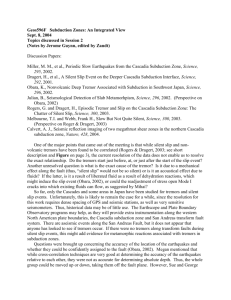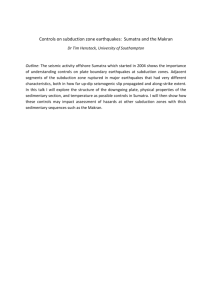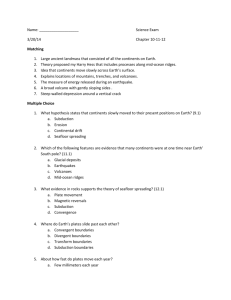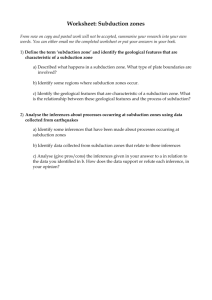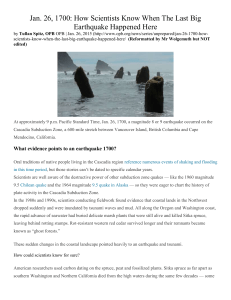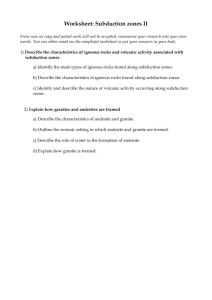jgrb51346-sup-0001-supplementary
advertisement
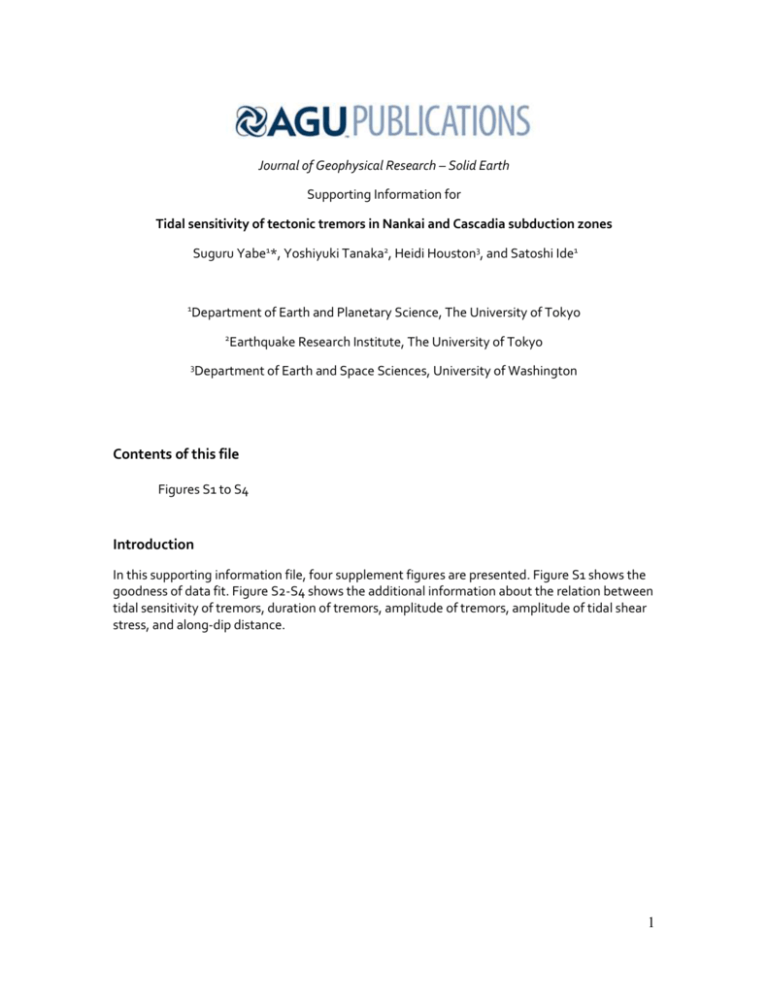
Journal of Geophysical Research – Solid Earth Supporting Information for Tidal sensitivity of tectonic tremors in Nankai and Cascadia subduction zones Suguru Yabe1*, Yoshiyuki Tanaka2, Heidi Houston3, and Satoshi Ide1 1 Department of Earth and Planetary Science, The University of Tokyo 2 Earthquake Research Institute, The University of Tokyo 3 Department of Earth and Space Sciences, University of Washington Contents of this file Figures S1 to S4 Introduction In this supporting information file, four supplement figures are presented. Figure S1 shows the goodness of data fit. Figure S2-S4 shows the additional information about the relation between tidal sensitivity of tremors, duration of tremors, amplitude of tremors, amplitude of tidal shear stress, and along-dip distance. 1 Figure S1. Observed and estimated tidal sensitivity of tremor rate to tidal shear stress. For several locations in Nankai and Cascadia subduction zones where the number of later tremors in a grid exceeds 1000, observed tremor rate at each tidal shear stress level is plotted with a blue line. Estimated fit of equation (1) is shown with a green curve. Estimated tidal sensitivity ( value) and its uncertainty are given in each panel. 2 Figure S2. Dependence of tremor durations and amplitudes on along-dip distance. (a) Duration of tremors is shown against along-dip distance. Blue, green and red symbols represent initiation, front, and later tremors respectively. The left panel is for Nankai subduction zone, and the right panel is for Cascadia subduction zone. (b) Same as (a), but for amplitude of tremors, which is estimated as seismic energy rate of tremors by Yabe and Ide (2014). 3 Figure S3. Dependence of tidal sensitivity to amplitude of tide stress in Nankai and Cascadia subduction zones. Tidal sensitivity from Figure 4 and 5 is shown along tidal-stress amplitude (Figure 1). (a) For initiation tremors in Nankai subduction zone. (b) For front tremors in Nankai subduction zone. (c) For later tremors in Nankai subduction zone. (d) For initiation tremors in Cascadia subduction zone. (e) For front tremors in Cascadia subduction zone. (f) For front tremors in Cascadia subduction zone. 4 Figure S4. Dependence of tremor durations and amplitudes on RMS amplitude of tidal shear stress. Same as Figure S2, but for RMS amplitude of tidal shear stress. 5
